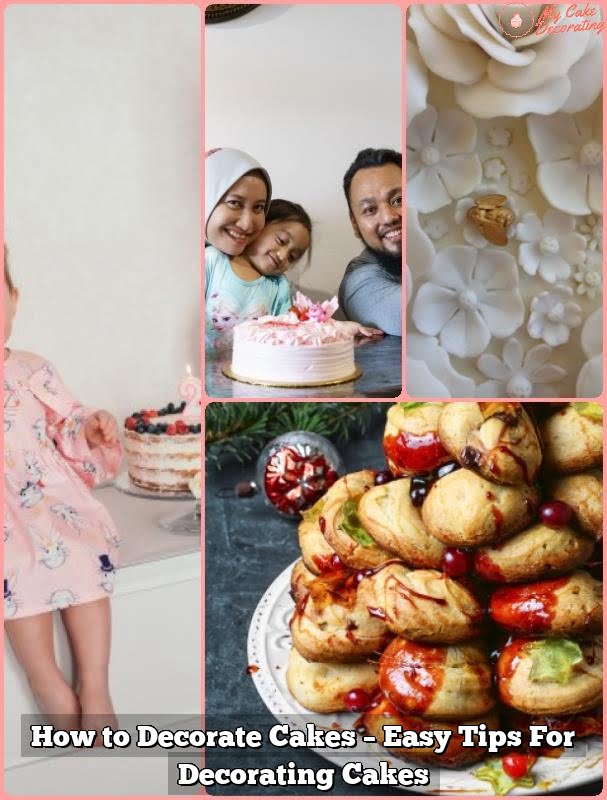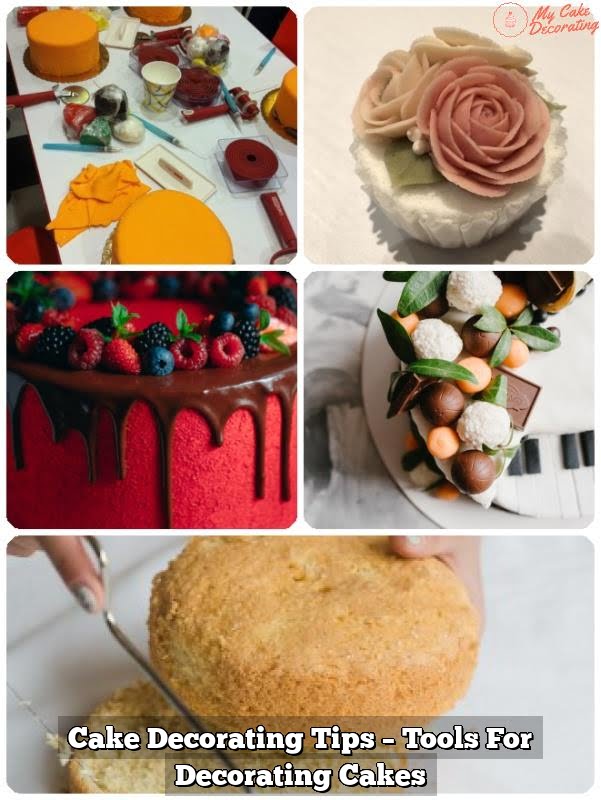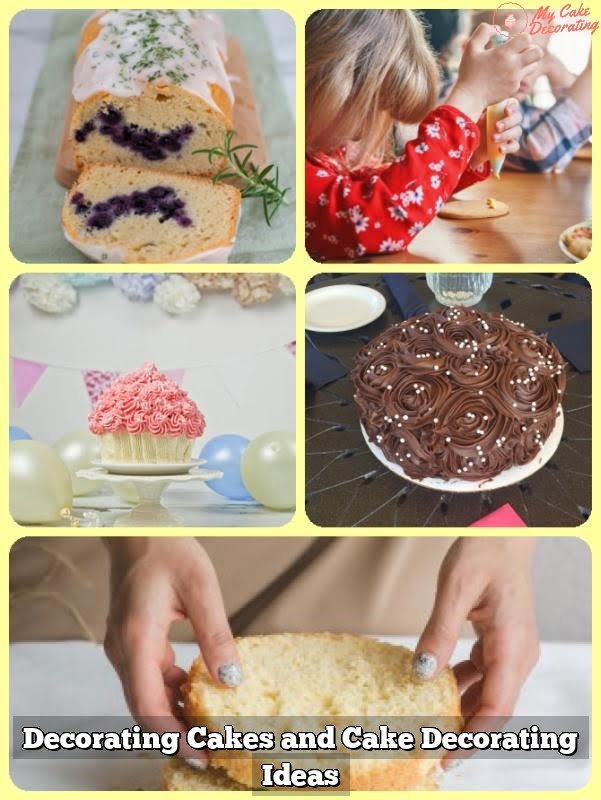Are you passionate about baking and looking to add a creative touch to your cakes? If so, learning how to begin decorating cakes is the perfect way to express your artistic side in the world of baking.
Decorating cakes is not just about making them look visually appealing, but it’s also a fun and rewarding skill to learn. Whether you’re a beginner or someone looking to hone their decorating skills, this article will guide you through the fundamentals of cake decoration.
Before diving into the realm of cake decorating, it’s essential to gather the necessary tools and supplies for beginners. From piping tips to spatulas, having the right equipment can make all the difference in achieving professional-looking decorations on your cakes. Understanding the different types of icing and their uses in decorating is also crucial in creating various designs and textures on your cakes.
As you embark on your cake decorating journey, it’s important to learn basic techniques such as piping, flooding, and smoothing. These skills form the foundation of cake decoration and will help you create intricate designs with ease.
Mastering the art of creating borders and designs with icing will elevate your cakes to a whole new level. Using tools like spatulas, piping bags, and tips will further enhance your decorating skills and allow you to unleash your creativity on every cake you make.
Gathering the Essential Tools and Supplies for Beginners
When it comes to decorating cakes, having the right tools and supplies is essential for a successful outcome. As a beginner, it can be overwhelming to know where to start and what items are necessary. To help you navigate through the world of cake decorating, here is a list of essential tools and supplies that every novice decorator should have in their arsenal:
- Cake turntable: A rotating stand that helps you easily frost and decorate your cake from all angles.
- Offset spatula: A tool used for spreading icing or frosting smoothly on the cake’s surface.
- Piping bags and tips: Used for creating different designs, borders, and writing on cakes with precision.
- Bench scraper: Helps in smoothing out the sides of the cake for a clean finish.
- Fondant smoother: Ideal for shaping and smoothing fondant over cakes for a professional look.
Furthermore, stocking up on the following basic supplies will also set you up for success in your cake decorating journey:
- Cake boards and boxes: Essential for transporting your finished creations safely.
- Gel food colors: Used to tint frosting or fondant in various shades for colorful decorations.
- Parchment paper or wax paper: Helps prevent sticking when rolling out fondant or transferring decorations.
- Icing smoother: Ensures a smooth finish on your frosted cakes by removing air bubbles and imperfections.
By having these essential tools and supplies at your disposal, you’ll be well-equipped to begin decorating cakes like a pro. Whether you’re looking to create simple designs or more intricate decorations, having the right equipment will make the process easier and more enjoyable.
Understanding Different Types of Icing and Their Uses in Decorating
When it comes to decorating cakes, one of the most important aspects to consider is the type of icing to use. Different types of icing can provide unique textures, flavors, and finishes to your cakes. Here are some common types of icing and their uses in cake decorating:
- Buttercream: Buttercream is a versatile icing that is perfect for creating smooth finishes on cakes. It can be flavored and colored in various ways, making it a popular choice for both beginners and experienced decorators.
- Fondant: Fondant is a smooth, pliable icing that can be rolled out and draped over cakes for a flawless finish. It is great for creating intricate designs and decorations on cakes.
- Royal Icing: Royal icing dries hard and is often used for intricate piping work, such as creating lace designs or delicate flowers. It’s essential for detailed decorations that need to hold their shape.
Understanding the characteristics of each type of icing will help you choose the right one for your cake decorating project. Experimenting with different icings will also allow you to discover which one works best for your preferred style and design aesthetic.
Learning how to work with different types of icing effectively involves practice and patience. As a beginner, start by mastering basic techniques such as piping borders or smoothing buttercream onto a cake. With time and practice, you’ll become more comfortable working with various icings and exploring advanced decorating techniques.
Remember, the key to successful cake decorating is not only about technical skills but also about creativity and imagination. Experiment with different colors, textures, and designs to develop your unique style as a decorator. Have fun with the process, keep practicing, and don’t be afraid to try new techniques to elevate your cake decorating skills.
Learning Basic Cake Decorating Techniques
One of the most crucial steps in learning how to begin decorating cakes is mastering basic cake decorating techniques. Piping, flooding, and smoothing are foundational skills that every beginner should focus on developing. Piping involves using a piping bag and various tips to create different shapes and designs with icing. This technique allows you to add intricate details to your cakes and cupcakes, making them visually appealing.
Flooding is another essential skill where you use a thinner consistency icing to fill in larger areas on a cake or create smooth surfaces for decorating. This technique is commonly used in cookie decorating as well, where royal icing is flooded onto the surface of the cookie to create a solid base for further decorations. Learning how to properly flood icing can elevate your cake decorating game and provide a clean canvas for more advanced designs.
Smoothing is the final step in achieving a professional-looking finish on your cakes. Whether you are working with buttercream or fondant, knowing how to smooth out any imperfections or air bubbles in your icing can make a significant difference in the overall presentation of your baked goods.
Techniques such as using an offset spatula or cake scraper can help you achieve that polished look that makes your creations stand out. Mastering these basic techniques will give you a solid foundation to build upon as you continue to explore the world of cake decorating.
Mastering the Art of Creating Borders and Designs With Icing
As you delve into the world of cake decorating, mastering the art of creating borders and designs with icing is a crucial skill to acquire. Borders not only add a finishing touch to your cakes but also serve as a defining element in the overall design.
To begin decorating cakes with borders, it is essential to have the right tools handy such as piping bags, tips, and couplers. These tools allow for precision when piping different types of borders onto your cakes.
One popular border technique is the shell border, which adds an elegant touch to cakes. To create a shell border, simply hold your piping bag at a 45-degree angle against the cake surface and apply even pressure while moving in a curved motion.
Another commonly used border style is the rope border, which involves gently squeezing out icing while creating a looped pattern around the cake’s edges. By practicing these techniques, you’ll soon be able to effortlessly create borders that enhance the appearance of your cakes.
In addition to borders, designing with icing allows for endless creative possibilities. From simple swirls and dots to intricate shapes and patterns, icing designs can take your cake decorating skills to the next level.
Experiment with different piping tips and techniques such as zig-zags, rosettes, and lattice designs to add visual interest and texture to your creations. Remember that practice makes perfect when it comes to mastering these skills, so don’t be afraid to try new designs and techniques until you find what works best for you.
| Cake Decorating Technique | Description |
|---|---|
| Shell Border | An elegant border created by holding a piping bag at a 45-degree angle and moving in curved motions. |
| Rope Border | Involves creating looped patterns by gently squeezing icing along the edges of the cake. |
| Icing Designs | Endless creative possibilities using different piping tips for swirls, dots, rosettes, zig-zags, and more. |
Using Tools Like Spatulas, Piping Bags, and Tips to Elevate Your Decorating Skills
Importance of Quality Tools
When it comes to decorating cakes, having the right tools can make all the difference in achieving professional-looking results. Investing in high-quality spatulas, piping bags, and tips can significantly elevate your decorating skills. A good spatula will help you smoothly apply icing on the cake layers and achieve clean edges. Piping bags are essential for creating intricate designs and details on your cakes, while different tips allow for various decorative elements.
Making the Most of Piping Bags and Tips
Piping bags are a versatile tool that can be filled with different types of icing to create various effects on cakes. Coupled with different tips such as round, star, leaf, and petal tips, you can experiment with different textures and designs.
Beginners should start by practicing basic piping techniques like writing messages or creating simple borders before moving on to more complex designs. Try using different pressure levels when squeezing the piping bag to understand how it affects the outcome of your decorations.
Utilizing Spatulas for Smoothing and Blending
Spatulas are not only used for spreading icing but also for smoothing out surfaces and blending colors seamlessly. Angled spatulas can help you achieve sharp edges on your cakes while offset spatulas are great for larger surfaces. Use a scraper or bench scraper to create perfectly smooth sides on your frosted cake. Practice using spatulas to blend different colors together for an ombre effect or create marbled patterns. Experimenting with various techniques will enhance your skills in cake decorating.
By mastering the use of tools like spatulas, piping bags, and tips, you can take your cake decorating skills to the next level. Remember that practice makes perfect when it comes to using these tools effectively. Don’t be afraid to experiment with different techniques and designs to find your unique style in decorating cakes. With dedication and creativity, you’ll soon be able to create stunning cakes that are not only delicious but visually appealing as well.
Exploring Advanced Techniques Like Fondant Sculpting and Sugar Flowers
Introduction to Advanced Cake Decorating Techniques
As you progress in your cake decorating journey, you may find yourself wanting to expand your skills and create more intricate designs. Two popular advanced techniques that can take your cakes to the next level are fondant sculpting and sugar flowers. These techniques allow for more creativity and customization in your cake designs, making them truly unique pieces of edible art.
Mastering Fondant Sculpting
Fondant sculpting involves shaping colored fondant into various shapes and figures to adorn your cakes. To begin, you will need a few essential tools such as fondant, a rolling pin, modeling tools, and cornstarch for dusting. Start by kneading the fondant until it is pliable, then roll it out to the desired thickness using a rolling pin. From there, you can use your imagination and sculpting tools to create anything from animals to objects or even people.
Crafting Sugar Flowers
Sugar flowers are delicate edible decorations that add an elegant touch to any cake. To make sugar flowers, you will need gum paste or flower paste, petal dusts for coloring, floral wire, and flower formers for shaping. Begin by coloring the gum paste with petal dusts and rolling it out thinly.
Cut out petals using floral cutters then shape them on wire using flower formers. Once dried, assemble the petals together to create beautiful sugar flowers that can be used to embellish your cakes.
By mastering these advanced techniques of fondant sculpting and sugar flowers, you can elevate your cake decorating skills and create stunning masterpieces that will impress friends and family at any special occasion. Keep practicing and experimenting with different designs to unleash your creativity in the world of cake decoration.
Troubleshooting Common Cake Decorating Mistakes and How to Fix Them
When you first start decorating cakes, it’s common to run into some issues along the way. Don’t worry, as many beginners face similar challenges when they are learning how to begin decorating cakes. One of the most common mistakes is uneven icing or frosting on the cake.
This can be solved by using a bench scraper to smooth out the icing or frosting evenly around the sides of the cake. Taking your time and working slowly can also help prevent this issue.
Another common mistake that beginners make is air bubbles in their icing. Air bubbles can ruin the smooth finish of your cake, but there is an easy fix for this problem. Before applying the icing on the cake, take a toothpick and gently poke any visible air bubbles to release them. You can then use a spatula or offset spatula to smooth out the surface again.
Decorating a cake with intricate designs may sometimes lead to shaky hands, resulting in wobbly lines or uneven patterns. To fix this issue, practice piping on a flat surface or parchment paper before transferring your design onto the cake. Taking your time and moving patiently can also help you achieve cleaner and more precise decorations on your cakes.
| Common Cake Decorating Mistake | How to Fix It |
|---|---|
| Uneven icing/frosting | Use a bench scraper to smooth it out evenly |
| Air bubbles in icing | Poke them with a toothpick and then smooth out |
| Shaky hands causing wobbly designs | Practice piping on a flat surface before applying to cake |
Conclusion
In conclusion, learning how to begin decorating cakes can be a fun and rewarding experience for beginners. By starting with the essential tools and supplies, understanding the different types of icing, and mastering basic techniques like piping and smoothing, you can create beautiful designs on your cakes. Additionally, practicing with tools like spatulas, piping bags, and tips can help elevate your decorating skills to the next level.
As you progress in your cake decorating journey, don’t be afraid to explore more advanced techniques such as fondant sculpting and creating sugar flowers. These skills can add intricate details and textures to your cakes, making them even more visually appealing. Remember that practice makes perfect, so don’t get discouraged if your first attempts are not flawless – keep honing your skills and experimenting with different designs.
Lastly, remember to troubleshoot common cake decorating mistakes that may arise along the way. Whether it’s fixing air bubbles in icing or achieving smooth edges on your cake, there are always solutions to improve your creations. With dedication and perseverance, you can continue to practice and refine your cake decorating skills, turning each new project into a masterpiece of edible art.
Frequently Asked Questions
What Is the First Step in Decorating a Cake?
The first step in decorating a cake is ensuring that the cake itself is properly baked and cooled. Once the cake is ready, you can start by leveling it, applying a crumb coat, and choosing the desired icing or frosting.
How Do I Start a Cake Decorator?
To start a career as a cake decorator, it’s important to gain experience through practice and possibly taking classes or workshops to improve your skills. Building a portfolio of your work and networking within the industry can also help kickstart your career.
Is It Hard to Learn How Do You Decorate Cakes?
Learning how to decorate cakes can be challenging at first, especially when trying out different techniques like piping, fondant work, and sugar crafting. However, with dedication, practice, and patience, anyone can learn how to decorate cakes beautifully over time. It’s all about developing your skills through trial and error.

Welcome to my blog about home and family. This blog is a place where I will share my thoughts, ideas, and experiences related to these important topics. I am a stay-at-home mom with two young children. I hope you enjoy reading it! and may find some helpful tips and ideas that will make your home and family life even better!





